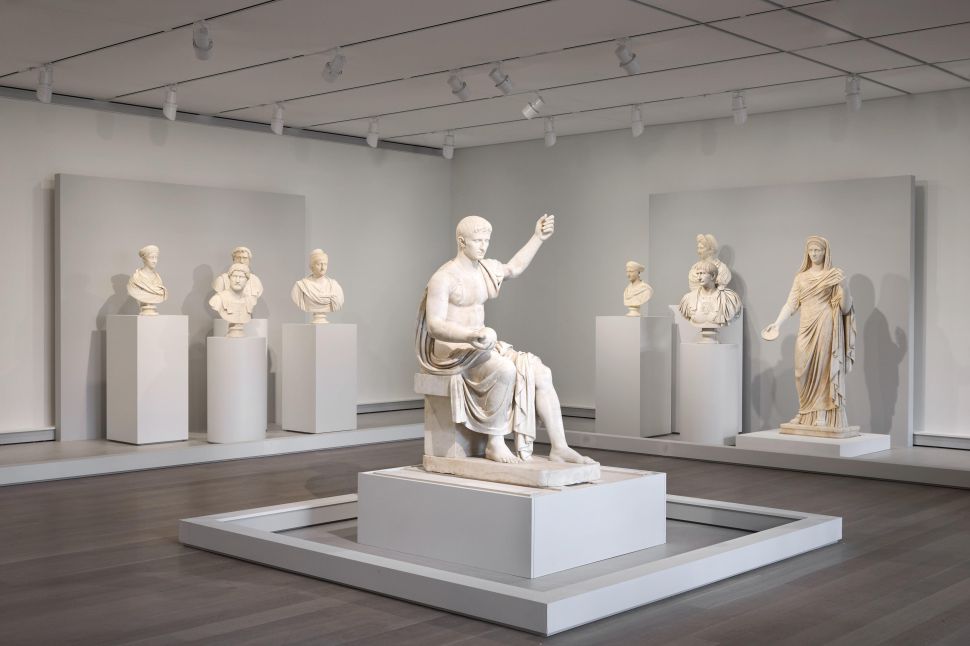Welcome to One Fine Show, where Observer highlights a recently opened exhibition at a museum not in New York City, a place we know and love that already receives plenty of attention.
To hear some people tell it, men can’t stop thinking about the Roman Empire. This might be true given their recent behavior on airplanes, where they can’t seem to get enough of Gladiator II, and at inaugurations. But you have to wonder how much the average man even knows about the Roman Empire. They didn’t really fight sharks in the Colosseum. So what’s the attraction here? The orgies? The aqueducts? The sandals?
If men are obsessed with the Roman Empire as women on TikTok have theorized, then men across the country should be flocking to the Art Institute of Chicago, which has just opened “Myth and Marble: Ancient Roman Sculpture from the Torlonia Collection.” This exhibition features fifty-eight rarely seen sculptures spanning nine centuries, representing the first exhibition ever of the prestigious collection outside of Europe. Featuring gods and emperors alike, of the fifty-eight, twenty-four are recently restored and have not been on display anywhere in nearly a century.
SEE ALSO: Zanele Muholi Shows that Insistence Is the Best Resistance in Savannah
The story of the collection itself is impressive, as it was originally intended to decorate the Torlonia Family Estates but was transformed through the vision of Prince Alessandro Torlonia (1800-1886) into the Torlonia Museum, following in the tradition of the artist Raphael (1483-1520) who claimed that the Pope tasked him with safeguarding the cultural heritage of ancient Rome.
It explains why the work is so first-rate. In the center of one room sits Statue of an Emperor on a Throne with a Portrait of Augustus (1st Century), its complicated title related to the fact that its head was most likely added later. But the first emperor was a solid choice because the pose the body assumed was associated with Zeus from the 5th Century BCE, making this a good piece of propaganda. He holds the world in his hand as drapery caresses him with its luxurious folds. His anatomy is human, but in total, he is more.
Portrait of a Young Woman, known as the Maiden of Vulci (Mid-1st Century BCE) is probably the most famous work in the collection, and with good reason. Though made with chisels, the cheeks are plump like real skin. Her mouth has been caught mid-conversation, and it looks as though she’s saying something charming. Her large eyes are anime-esque. One can imagine how it was even more appealing with the jewels in her hair and ears, as the slots for those are still visible.
The pieces in this exhibition convey a great sense of what it must have been like to encounter these works in their contemporary setting. Portus Relief (Late 2nd–early 3rd century) offers the kind of storytelling that would enthrall a viewer of airline pap. Named for the main port of Imperial Rome, the relief shows a ship with an ornate sail decorated with a dual image of Romulus, Remus and the she-wolf, but is otherwise dedicated to travel wonders from that era. A man rides a chariot pulled by elephants. Another, perhaps African, wears a mane like a lion bearing a giant eye to ward off evil. It effectively creates the sensation of stepping into another world, which may have been the goal of the curators, too.
“Myth and Marble: Ancient Roman Sculpture from the Torlonia Collection” is on view at the Art Institute of Chicago through June 29.

